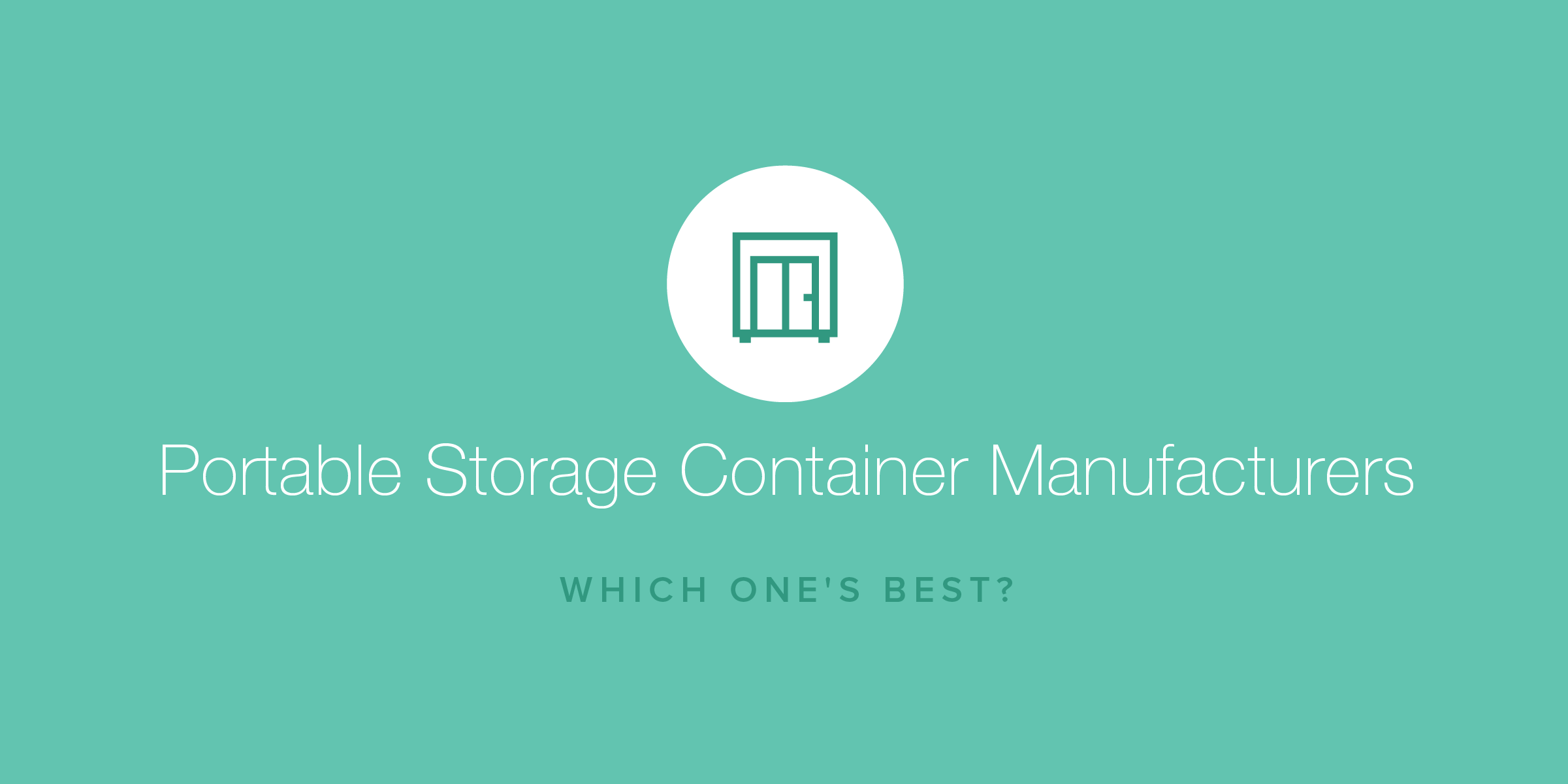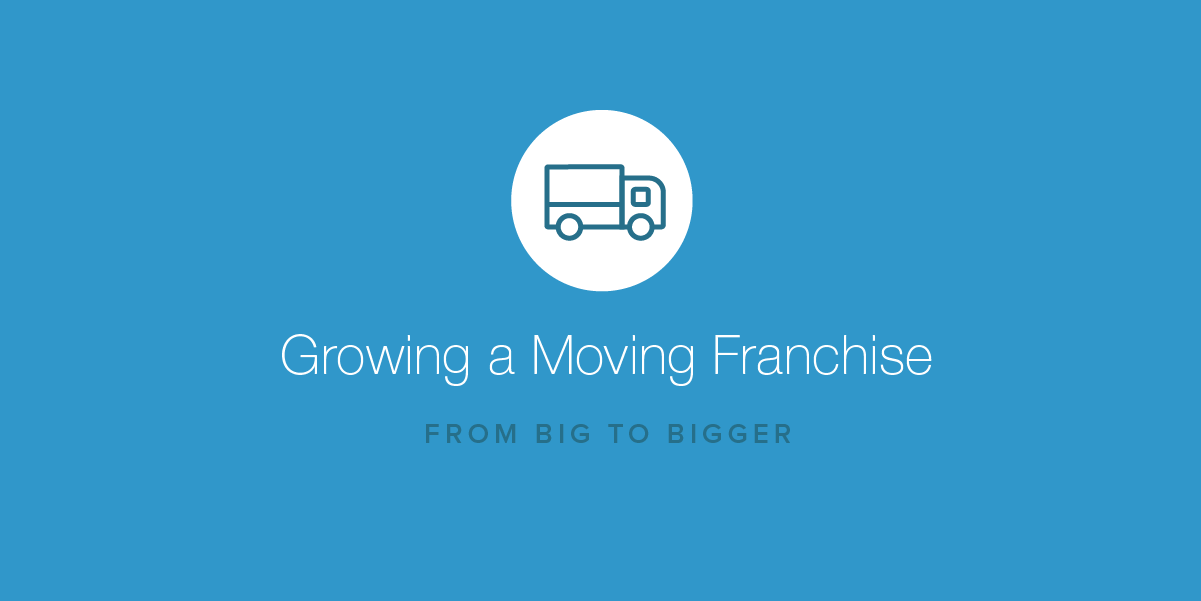Portable Storage Container Manufacturers for Moving Companies
- October 25, 2019
- By: Vonigo
Is your moving company shopping for portable storage containers? Here’s what to look for in portable storage containers, a list of portable storage container manufacturers, and a list of container retailers and marketplaces.
What to Look for in Portable Storage Containers
In order to compare and contrast containers, you need to know what to look for in portable storage containers. You’ll need to know what features are available, and you’ll need to consider which features fit your moving company best.
Making the wrong decision could mean buying a portable storage container that doesn’t fit your needs, isn’t easily maintained in the long-term, or doesn’t last long at all. Making the right choice means making a long-term investment in the right portable storage container that could last your moving company a lifetime.
We can’t tell you what’s best for your moving company because every company needs something different, but we can arm you with the knowledge to figure out what’s best for you.
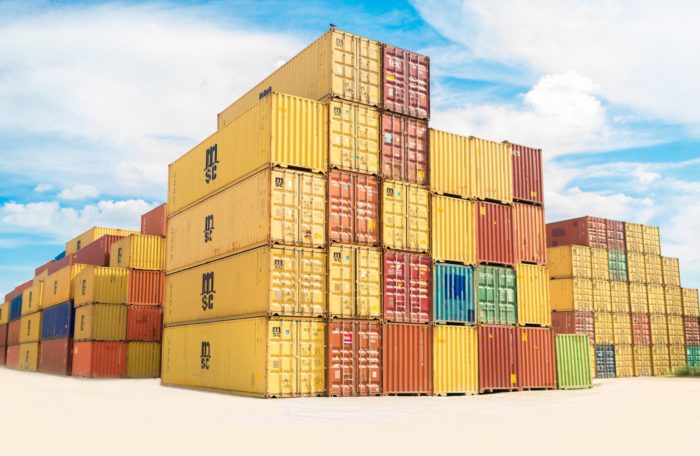
Materials
Portable storage containers consist of many different materials. While the frames are typically a sturdy metal, the walls, roofs, and floors can all be made of different materials. And these materials can come in different types and gauges.
Plastic
On the upside, plastic tends to be cheap and lightweight. The downside is that plastic isn’t as strong as metal, and may not be able to support as much weight as metal.
Additionally, plastic roofs can flex, expand, and contract until they eventually crack. Plastic roofs left out in the sun can let in UV light, which may fade the colors of the contents inside the portable storage container.
Plywood
Plywood can also be cheap and lightweight. But plywood also isn’t as strong as metal, and might not support as much weight as metal. That said, most plywood walls have metal skins. Plywood runs the additional risk of developing mold in damp or humid conditions. And mold poses its own problems.
Plywood isn’t necessarily good or bad. Plywood walls skinned in metal can work, though that can be considered as cost-cutting—and not necessarily the good kind.
On the other hand, most containers feature replaceable plywood floors. You never have to worry about scratching up plywood floors like you do with metal floors, and plywood floors are cheaper to replace.
Aluminum
Aluminum is a hardy metal, but not quite as sturdy as steel. It’s relatively lightweight for a metal, but not as strong as most metals. Aluminum can be a good material for most container walls and roofs, though not necessarily good flooring.
Aluminum does corrode, though it corrodes in a different way from steel that actually protects it from further corrosion.
Steel
Steel is ‘old faithful.’ It’s strong but heavy. It makes for sturdy, durable construction that can last a lifetime but it’s also heavy and hard to pull with a truck.
Steel also rusts, which is a major problem. Rust gradually eats away at steel, forms holes, and eventually destroys your container if left unattended. Rust also grows bacteria that increase the chance of tetanus infection. And that’s not to mention that rust looks bad to your customers.
Rust becomes an ongoing maintenance problem. Your company will have to continually spend time and effort sanding off rust and repainting or recoating the container. That’s a recurring maintenance cost in the long run. That said, some steel comes with rust-resistant finishes, which we’ll go over later.
Other Materials
Some containers may use various other materials with their own special properties.
For example, Portable Storage Box Company offers Galvanized Smooth Boxes with bamboo flooring. They claim that their “non-skid bamboo floor” is twice as strong as plywood, is formaldehyde-free, and works for all climates.
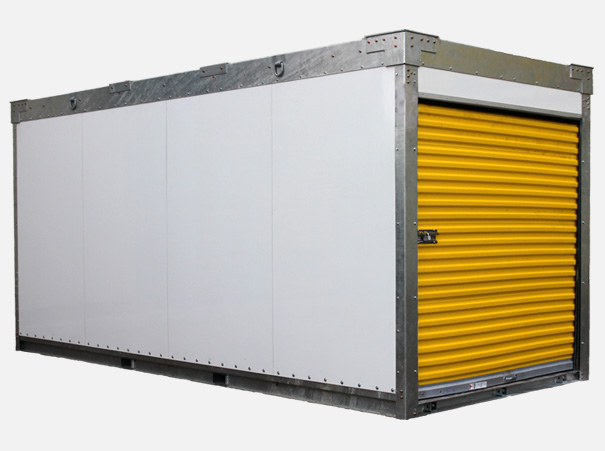
Finish
Your containers will undoubtedly use metal, and metal rusts. However, certain finishes can protect metal against rust.
Overall, you get what you pay for in rust resistance. The cheaper, easier options tend not to last very long, and you’ll spend more time maintaining your containers. The pricier options tend to last much longer and save you maintenance costs.
Painting
Painting over some primer is a fairly cheap, quick, and simple way to protect metal from rust… for a while. But the metal will eventually rust, and you’ll have to sand the rust off and repaint the metal. And no, you can’t just take the easy way out and paint over the rust.
That means your moving company will spend time and money maintaining the container. That type of recurring maintenance cost adds up in the long run.
Painting might be inexpensive in the short run but becomes a recurring maintenance cost in the long run. It might be better to just spend a little more up-front to keep your maintenance costs down.
Powder Coating
When applied correctly, powder coating can be a very effective way to resist rust. However, some portable storage container manufacturers cut costs in powder coating, resulting in coatings that don’t really resist rust. Your mileage may vary.
Galvanization
Galvanization is when metal is dipped in molten zinc, giving it a zinc coating. This is considered one of the best options for preventing rust. However, you get what you pay for, and galvanization can be a bit pricier than the other options.
Rust Grip
Rust Grip is a commercial coating specifically designed to create rust resistance. It’s used in industrial applications like coating tubing on oil platforms, so it’s pretty sturdy stuff.
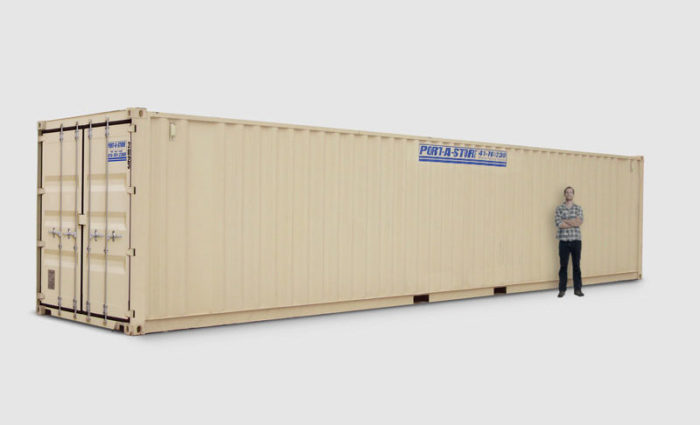
Size & Dimensions
The sizes and dimensions of portable storage containers vary a lot. We can’t tell you what the “best’ size is, but we can point out several things to consider when making a choice for your moving company.
Smaller portable storage container “vaults” tend to be cubic, designed for portable self-storage. Most other portable storage containers—especially the larger ones—tend to be a typical rectangular shape.
Rectangular portable storage containers typically have external dimensions of about 5-20’ long, 8’ wide, and 8’ high. There are many other sizes available, and some portable storage manufacturers allow a lot of customization.
How Big is Big Enough?
The first major thing you should consider is your market how much space your customers need.
If you’re offering self-storage, then small portable storage container “vaults” might be enough. One of the upsides is that smaller containers are easier to store, load, ship, and unload, and you can fit more of them in your facility.
If you’re helping people move to a new home, a medium-sized portable storage container is probably most appropriate.
And if you’re helping companies move to new offices (or construction sites), you might need large portable storage containers. But large containers can be harder to store, load, ship, and unload (especially in tight spaces), and you can’t fit as many in your facility.

Other Considerations
You’ll probably want a variety of different sizes in order to cover different customer needs, but you’ll also want to focus on buying more of the size that people ask for most often. You’ll also need to think through how you’re going to fit all your containers in your facility, as well as how much space you’ll need to load and unload them.
When you’re looking at container specifications, be aware of the difference between internal and external dimensions. Portable storage container manufacturers usually state their external to make you think they fit more than they actually do. Also, be aware of the difference between internal square footage and internal volume.
Square footage is the two-dimensional space of the floor, which is how much stuff you could lay out flat. Volume is the three-dimensional space inside the container, which is how much stuff you could fit if you stack things on top of each other.
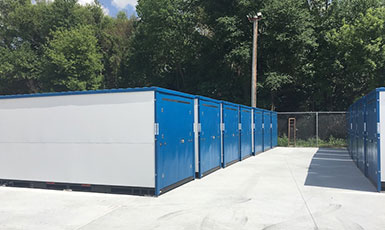
Weight
There are a few things to consider when talking about the weight of a portable storage container. First, there’s the weight of the portable storage container itself, sometimes called the “unit weight,” “empty weight,” “unladen weight,” or officially the “tare weight.”
Then there’s the total weight the portable storage container can hold, sometimes called the “maximum weight capacity,” “laden weight,” or “payload weight.”
Once you’ve loaded the portable storage container up, it now weighs the combined sum of its tare weight and payload weight. And you’ll need to make sure your trucks, forklifts, or boom cranes can actually move that much weight.
If you offer self-storage and you stack your portable storage containers on top of each other, you’ll need to consider how much weight the bottom container can support under the weight of multiple full containers.
Designs & Features
Portable storage containers come in all sorts of designs. Each container has different walls, roofs, floors, doors, and more. You’ll want to carefully consider what fits your moving company best. Here we’ll list common features you should consider.
Walls
Obviously, the portable storage container’s walls are pretty important. It’s important to consider the materials and gauges of your container’s walls.
Some feature flat walls while others have corrugated walls. Flat walls tend to have a cleaner, simpler aesthetic for customers, and they’re easier to print your company’s logo or name onto. Corrugated walls look more industrial and don’t necessarily print a logo as clearly.
It’s also important to note how the walls connect with the frame. Some walls fit flush with the frame, which is good. Others are not flush in ways that allow water to pool and cause corrosion.
Roof
The roof doesn’t need to be as aesthetically pleasing as the walls, but it has to be a bit more practical. Roofs need to be made of good materials and a solid thickness to support stacking multiple full portable storage containers.
Roofs also need to resist water, ice, and snow, especially if you intend to leave them outdoors. Corrugated roofs without proper drainage can allow water to pool up, add weight, and cause corrosion.
Cheaper roofs can let in the elements that damage the contents of the portable storage container. For example, some plastic roofs can let in the sun’s UV light and fade the colors of whatever’s inside the portable storage container.
Floor
First, the floor needs to be structurally sound so it doesn’t flex or bend.
Second, the flooring should be replaceable. Remember that people are going to be pushing and pulling heavy things like furniture across the floor, which entails scuffs, scratches, and scrapes against the floor.
¾” plywood flooring is a standard because you don’t have to worry about scuffing and scratching it, and it’s pretty cheap to replace.
Portable Storage Box Company’s Galvanized Smooth Box even uses bamboo flooring that’s supposed to be “twice the strength of plywoods, formaldehyde-free, and designed to weather in all climates.”

Casters & Wheels
Some portable storage containers come with permanent casters attached, while others don’t come with any wheels.
Permanent Casters
Initially, you might think that having casters permanently attached to the portable storage container might make life easier by enabling you to roll the container around. Unfortunately, permanent casters can also pose a number of problems.
Permanent casters only work on flat surfaces and can get stuck on unpaved surfaces. They also need a hard surface to roll on, but can also scratch up those surfaces. That means you almost always need plywood runners to roll the casters across, which can add a lot of extra hassle.
If you don’t handle the casters properly, their locking pins can sheer off, and the casters can break off. If they break off mid-use, you might end up dragging the container and scraping the bottom coating.
Repairing or replacing casters can cost time and money, adding up maintenance costs over time. If you’re stacking your portable storage containers, permanent casters can make them difficult to stack and can cause damage to the roof of the bottom container. And on hot days, casters can sink into the pavement.
Permanent casters can make it easier to roll around a portable storage container, but they come with a lot of extra trouble. And casters without brakes might roll when you don’t want them to.

Detachable Wheels
Some portable storage container manufacturers offer detachable wheels you can attach and detach wheels as needed. This way, you can choose when you need wheels, and when you don’t.
For example, Mobile Container Sales offers removable wheels for their portable storage containers.
Forklift Features
Some portable storage containers have forklift “pockets” (holes) to help hold the forks. However, the pockets are usually very shallow, and aren’t necessarily that secure.
Some portable storage containers have full-width forklift sleeves that completely encompass the forks. This is much more secure, though it can be heavier and more expensive.
Doors
There are many different door designs.
First, there are traditional swing-out doors, just like normal doors. Most of these setups have two doors—one on each side—that swing out horizontally on hinges. The most common option is two doors, but some have a single large swing-out door.
Most portable storage containers have doors at only one end of the container, but some have doors at both ends. And some portable storage containers have doors on the walls. However, those are usually for portable offices or housing, rather than for moving.
Other portable storage containers use roll-up doors, similar to garage doors.
Swing-Out vs. Roll-Up Doors
On the upside, roll-up doors do not take any additional space to open or close, unlike swing-out doors. Roll-up doors can be easier to use, and some customers prefer that ease-of-use. Roll-up doors also require less maintenance since they don’t rely on hinges (which rust).
On the downside, roll-up doors aren’t always as secure as swing-out doors. Roll-up doors aren’t always watertight, which can threaten the contents of the container and create an opportunity for corrosion.
Traditional swing-out doors are just fine for most applications (including moving), and can be more secure and watertight. Swing-out doors are also pretty intuitive to use for most customers since they’re so common. Swing-out doors can also last longer without issues.
On the downside, swing-out doors take up more space when opening and closing. Swing-out doors rely on hinges which can rust or break and can also be a hassle to use in exceptionally windy conditions.
Stackability
If you stack your portable storage containers, then you should consider their stackability.
Most portable storage containers are stackable up to three containers, though BOS Container USA claims you can stack their Quick Build Container up to four containers outside. On the other hand, some containers might not be stackable at all.
You should consider how much weight a container can support with two filled containers on top of it. The bottom container is going to have to support its own payload, two containers above it, and their payloads. That can be a lot of weight.
You should also consider is how easy it is to stack portable storage containers. Portable storage containers with permanent casters might be a little trickier to stack, and they push all their weight into their casters which can damage the roof of the bottom container.
Another thing to consider is how you’re going to stack your portable storage containers. How are you going to fit them in your facility? How easily can you move them with a forklift or boom crane? Do they have forklift pockets or full sleeves?
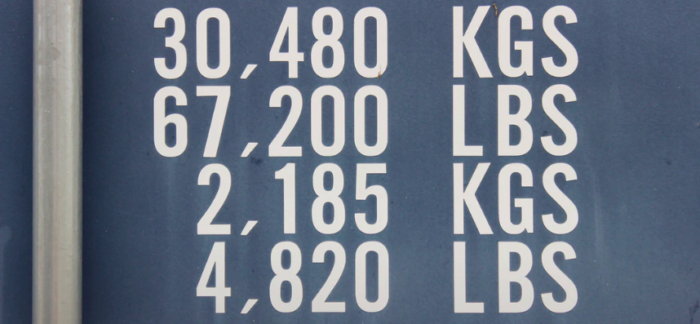
Appearance
Your portable storage container represents your company, and it’s one of the things your customers will look at a lot. It’s also visible to everyone who sees it as you haul it down the road, which can give you a lot of free exposure.
Now think about all the people looking at your portable storage container. If it’s some old, rusty, corrugated box that looks like it came from an abandoned cargo ship, it won’t make you look good.
On the other hand, if it’s a clean, flat box with your moving company’s logo neatly printed on the side, it will make you look professional and trustworthy. And when people are entrusting you with safely moving their belongings, you want to be seen as trustworthy.
It might be tempting to buy old, used portable storage containers since they come at a lower cost. But most of them look old. A lot of them have faded colors, lots of rust, or just the color of rust. Some still bear the logo of their previous owner.
If you buy new portable storage containers, you need to know how long they’ll keep looking new and how often you’ll spend time and money maintaining that look (i.e. sanding off rust and repainting the logo).
If you’re buying straight from a portable storage container manufacturer, some of them allow you to customize your container with your moving company’s name or logo. This is incredibly important for your branding and your professional appearance to customers.
Security
Thieves see portable storage containers as boxes full of goodies. Obviously, it’s important to keep the bad guys out. When you’re shopping around for portable storage containers, keep an eye out for locking mechanisms. Here are some questions to consider.
Does it come with built-in security features? What types of features and how secure are they? Does it come with multiple layers of security? How easily can you change locks? Can you add more locks or create additional layers of security? Do you have to worry about tracking or losing keys?
Durability, Maintainability, & Lifespan
Buying portable storage containers is investing in a long-term commitment. You’re not just buying a product, you’re investing in a tool that your moving company will commit to using and maintaining for years to come.
That includes years of paying recurring maintenance costs. Eventually, you’ll need to repaint, repair, or replace parts.
If you have swing-out doors, you’ll have to worry about the health of the hinges. With permanent casters, you’ll have to worry about repairing or replacing them. If you have locks, you’ll have to worry about replacing them or their keys.
All of these maintenance costs add up over time. It can be worth it to spend a little more money in the short run for more durable portable storage containers so you don’t have to spend more recurring maintenance costs in the long run.
And the longer you make your container last, the greater your return on investment.
One thing you need to consider is how resistant the portable storage container is to weather conditions like humidity, water (rain), ice, and snow. These elements can pool up, add weight to the roof of your container, leak into the container, cause corrosion, and create mold.
Left unattended, rust will gradually eat away the metal of your portable storage container, tearing holes in it and possibly destroying its structural integrity. Of course, there are many ways to combat rust, each of which requires different amounts of maintenance.
If you’re using plywood flooring, plywood can form mold, which poses its own threats. And if you have plastic roofing, some plastic roofs allow the sun’s UV lights inside the container.
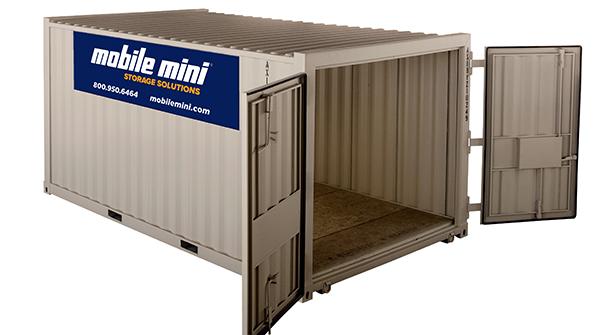
Price
Obviously, only you know your budget. But we can point out some things to consider.
First, don’t see this as a purchase, see this as a long-term investment. If you’re buying a portable storage container, you’re committing to buying it, using it, renting it out, and maintaining it for years to come. It’s worth doing the research and picking the right one.
Similarly, it can be cheaper to buy an expensive portable storage container, and it can be expensive to buy a cheap one. That’s because buying an expensive, high-quality container in the short run can mitigate maintenance costs in the long run.
Shipping & Assembly
Once you buy some portable storage containers, it’s important to know how they’re going to be shipped and assembled.
If you’re buying used containers, the seller might ship it pre-assembled in one piece. There’s nothing wrong with that, but it means they’ll only be able to ship a few at a time. That’ll be slow if you’re buying multiple containers.
If you’re buying new portable storage containers, the seller will probably ship it to you in flat-packed pieces. This means they can ship a lot to you in one shipment, but it also means you’ll have to assemble them yourself.
When it comes to assembly, you’ll want to know how much manpower you’ll need (usually just two people), what tools or parts you’ll need (nuts, bolts, forklifts, or a boom crane), and how much time it’ll take (assembly time ranges from 15 minutes to one hour).
And how will you know how to assemble it? Some portable storage container manufacturers might just give you an instruction manual and wish you luck. Others offer instruction via phone call. And some manufacturers like Boxwell offer on-site assistance.
Just be aware that time spent assembling new portable storage containers is time that could’ve been spent working on something else. That’s an opportunity cost.
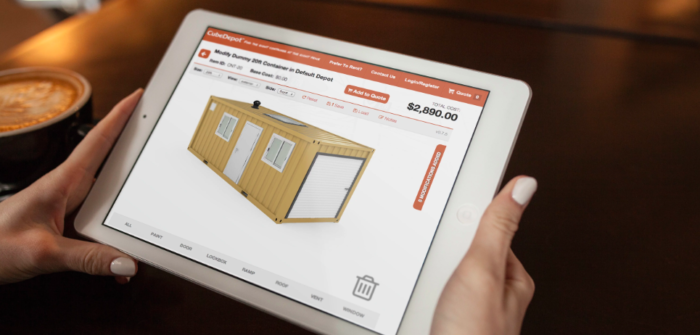
Portable Storage Container Manufacturers
Now that you know what to look for in containers, you want to know where to start shopping. Here, we’ll list the portable storage container manufacturers and their best product lines for moving companies.
Boxwell
Boxwell offers five types of portable storage containers:
- Moving Containers
- Portable Storage Containers
- Self-Storage Containers
- Portable Offices
- Restoration & Remediation Containers
We recommend looking into the moving containers and then the portable storage containers. The moving containers are specifically marketed to moving companies, while the portable storage containers are a bit more generic.
Universal Storage Containers
Universal Storage Containers offers 11 different storage containers:
- Z-Box
- Green-Lite
- Cargo-Ground Containers
- Cargo-Air Containers
- Instant-Housing
- Instant-Office
- Instant-Warehouse
- Polar Bear
- Kiosk Containers
- Grow-It Containers
- Locker-Box Containers
We recommend looking into the Z-Box and Green-Lite containers. The other containers are pretty neat, but not relevant to your moving company.
Mobile Modular Containers
Mobile Modular Containers offer three types of containers:
- Portable Storage
- Portable Office
- Office & Storage Combo
We recommend the portable storage container, as it makes the most sense for your moving company. That said, if you rent to construction workers, you might want to consider the others too.
Portable Storage Box Company
Portable Storage Box Company offers five types of portable storage containers:
- The Galvanized Smooth Box
- The Smooth Box
- The Mini Container
- Steel Vaults
- The Pro Box
We recommend looking into the Galvanized Smooth Box.
Mobile Container Sales
Mobile Container Sales offers mobile storage containers in three sizes:
- 8’ Mobile Containers
- 16’ Mobile Containers
- 20’ Mobile Containers
In other words, they’re offering the exact same product in Small, Medium, and Large.
The 16’ containers will probably fit most moving companies. The 8’ mobile containers can work as moving vaults and self-storage if you offer that. The 20’ mobile containers might serve larger customers with more stuff, like businesses.
Mobile Container Sales also offers removable container wheels.
BOS Container USA
BOS Container USA offers their BOS SC3000 Quick Build Container in six sizes from 3’x7’x7’ to 20’x7’x7’. The width and height is always seven feet but the length varies from three to 20 feet.
Port-a-Store
Port-a-Store offers storage containers in six configurations:
- 6×6’ Yard Buddy
- 8×8’ Super-Shed
- 10×8’ Half-Pint
- 20×8’ Storage Container
- 20×8’ Open-Side Container
- 40×8’ Storage Container
These storage containers aren’t specifically marketed to moving companies, but they might still be worth looking into.
Mobile Mini Solutions
Mobile Mini Solutions offers three types of containers:
- Portable Storage
- Ground Level Offices
- Tank & Pump
They offer three types of portable storage containers:
- Standard Width Storage Containers
- Extra-Wide Portable Storage Containers
- Record Storage
We recommend looking into the standard width storage containers.
Overall, Mobile Mini Solutions is marketed more to businesses that need temporary solutions, but these might still be worth looking into.
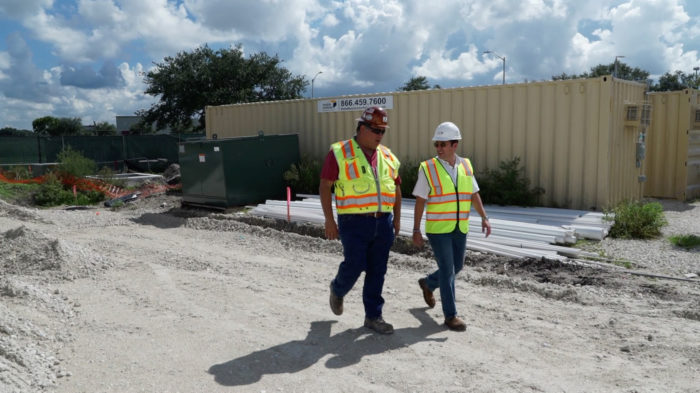
Portable Storage Container Retailers & Marketplaces
If you’re still shopping around for portable storage containers for your moving company, you can check out these retailers and marketplaces. These companies aren’t portable storage container manufacturers, but they offer selections of containers for sale.
Also, once you’ve bought your fancy new containers, you can usually list them on these marketplaces for rent.
Container Alliance
Container Alliance is an extensive network of container providers across the U.S claiming a large selection of quality portable storage containers.
Western Container Sales
Western Container Sales offers steel storage containers sourced directly from intermodal cargo for rent or sale. They also offer a 1-year warranty on every purchase.
If you’re concerned about price, Western Container Sales might be a good place to buy used shipping containers at a discount.
Outback Storage
Outback Storage offers containers for sale, rent, or modification throughout Rhode Island, Connecticut, Massachusetts, Vermont, New Hampshire, and Maine. So despite the name “Outback,” this is the place to check out if you’re operating in the Northeastern United States.
CubeDepot
CubeDepot is an online marketplace and directory for buying, renting, and modifying storage containers. They offer five sizes of containers:
- 10’ Small & Compact Containers
- 20’ Containers
- 40’ Large Storage Containers
- 40’ High Cube Containers
- 45’ High Cube Containers
Pac-Van
Pac-Van claims to be a single-source supplier for Conex boxes, mobile containers, and portable office spaces. They seem to market more to construction companies, but it does offer storage containers for rent or sale.
Need help managing your moving company?
Managing a moving company is difficult. Shopping for the right portable storage containers is just one problem of many.
You need to manage customer relationships, give quotes, manage work orders, schedule jobs, invoice customers, handle billing and payment, track inventory, and analyze data. You need to do all that, and grow your business at the same time. It can be overwhelming.
Thankfully, there’s software to help you manage your moving company, whether you’re a small company or you’re a multi-location franchise. Want to learn more about how software for moving and storage companies can help you manage and grow your company? Book a free, private demo of Vonigo.
